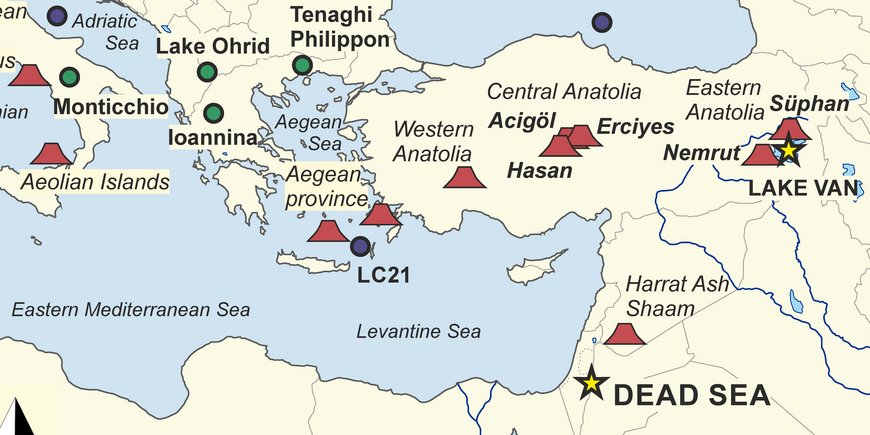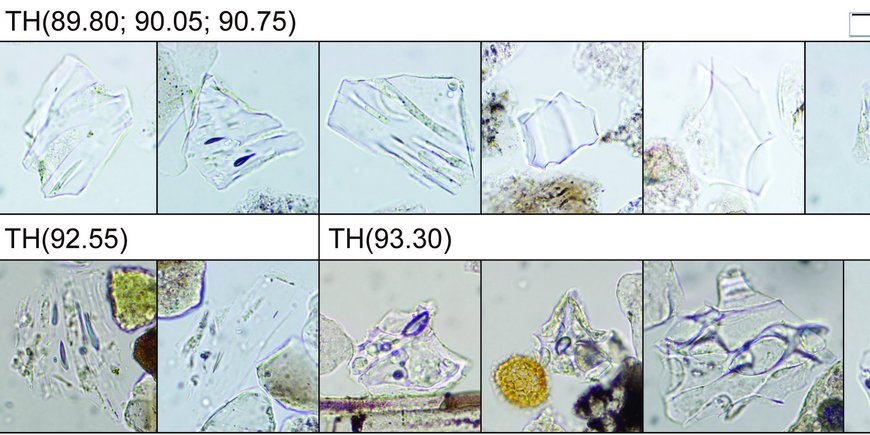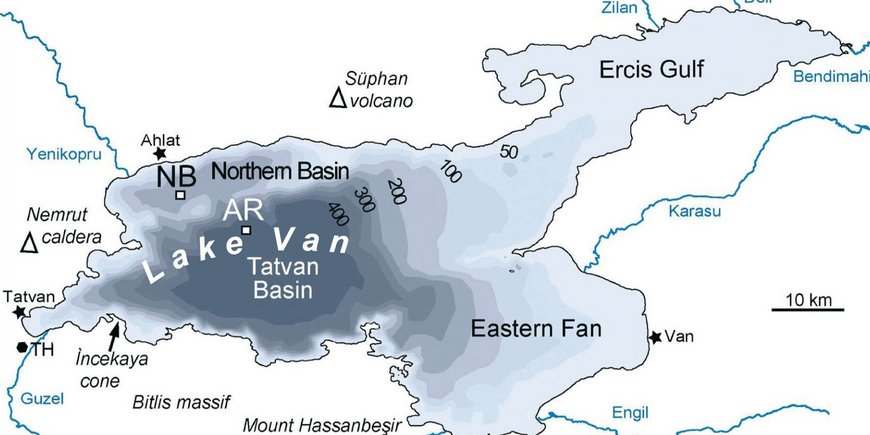TephroMed - Tephrochronological synchronization Dead Sea and Lake Van
The aim of the TephroMed project (Tephrochronological synchronization of ICDP sediment cores from the Dead Sea and Lake Van in the eastern Mediterranean for the last 130,000 years) is the exact synchronization of the long ICDP sediment cores from the Dead Sea and Lake Van. This should provide the basis for a solid chronological fundament for deciphering regional hydroclimatic differences in the eastern Mediterranean. For both the Dead Sea and Lake Van sediment records independent chronologies based on different relative and absolute dating techniques have been established which, however, suffer from rather large dating uncertainties especially beyond the radiocarbon time scale. This prevents from a detailed comparison and integration of these key palaeoclimatic records in order to investigate regional climatic differences.
We will make use of recent advances in the search for cryptotephra (macroscopically invisible volcanic glass shards) in sediment records that have been demonstrated as a suitable tool for regional synchronisation even if a precise dating of the correlating volcanic eruptions is not available. We aim at searching for glass shards in the Dead Sea ICDP core around major climatic transitions during the last glacial/interglacial cycle and correlate these through major and trace element chemistry with glass shards from selected major visible tephra layers in the Lake Van record.
In a pilot study we could prove that volcanic glass from Anatolian sources is much more abundant in the Dead Sea sediments than expected. So far, a robust geochemical correlation with early Holocene and late Glacial eruptions of the Erciyes Dag (central Anatolia), Süphan and Nemrut (eastern Anatolia) volcanoes was successful. This makes correlations of Dead Sea tephra with Anatolian volcanic eruptions very promising, even if that presumably will not be possible for all tephra horizons in the Dead Sea due to the large number of Anatolian eruptions with similar geochemistry. We will apply glass shard morphology as well as major and trace element geochemistry for correlations. In addition to the direct link of the Dead Sae and Lake Van cores, we attempt to determine the volcanic centres and where possible the exact eruption of major tephra horizons through correlation with glass chemistry from proximal deposits and other lacustrine sediment records in Anatolia through collaboration with partners.
Ultimately, a tephra-based synchronisation of the Dead Sea and Lake Van ICDP cores will provide a solid base for testing the independent age models of both cores and reduce present dating uncertainties. Finally, the synchronisation of these two key palaeoclimatic records will allow to temporally quantify and better understand regional hydroclimatic differences in the eastern Mediterranean.
Funding
Deutsche Forschungsgemeinschaft (DFG) - SPP 1006: Bereich Infrastruktur Internationales Kontinentales Bohrprogramm (ICDP) / BR 2208/16-1, SCHW 1183/1-2
References
Rebecca J. Kearney, Markus J. Schwab, Daniel Redant, Ina Neugebauer, Oona Appelt, Cecile Blanchet, Jan Fietzke, Christina Günter, Daniela J. M. Müller, Rik Tjallingii & Achim Brauer (2024): Identification of the Campanian Ignimbrite in the Dead Sea and consequent time‑transgressive hydroclimatic shifts in the Eastern Mediterranean. Vol.:(0123456789). Scientific Reports | (2024) 14:12114, https://doi.org/10.1038/s41598-024-59639-7
Neugebauer, I., Müller, D., Schwab, M. J., Blockley, S., Lane, C. S., Wulf, S., Appelt, O., Brauer, A. (2021): Cryptotephras in the Lateglacial ICDP Dead Sea sediment record and their implications for chronology. - Boreas, 50, 3, 844-861, https://doi.org/10.1111/bor.12516







